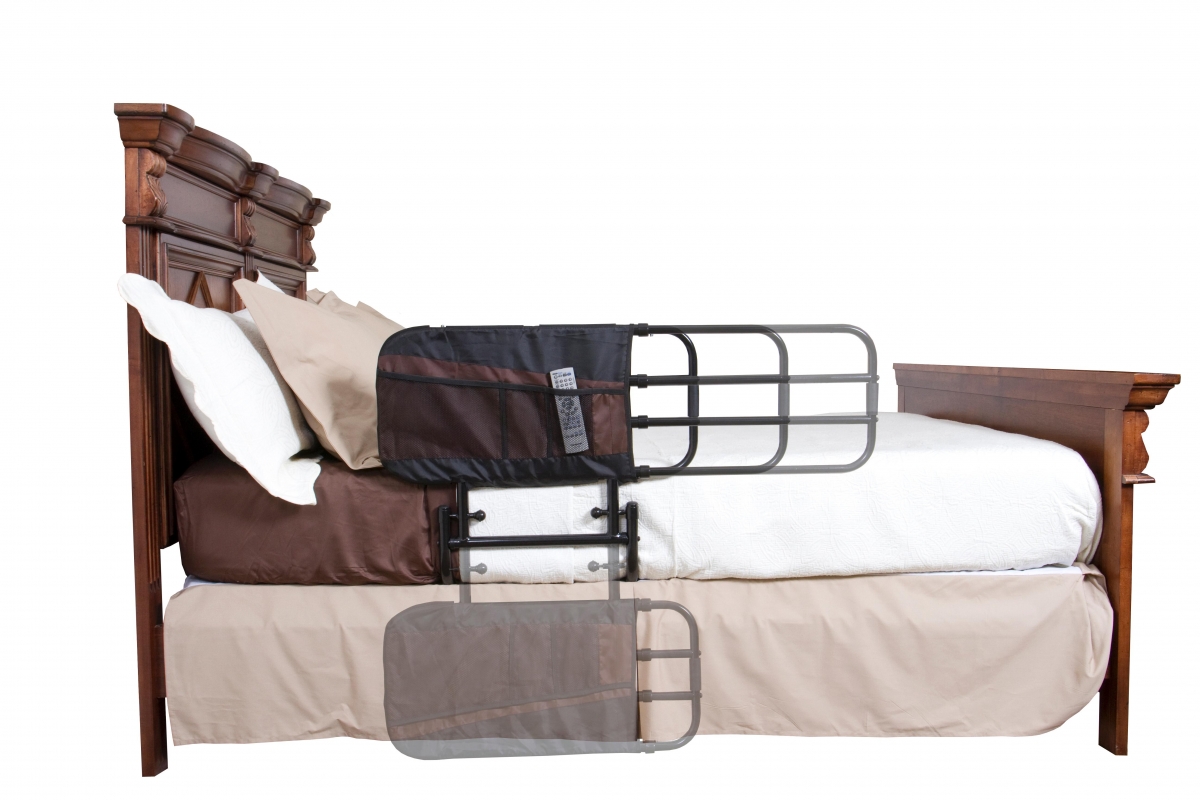Due to Medicare cutbacks and competitive bidding, many HME providers have been looking for more products that provide cash sales for their stores. When finding new products to offer your customers, the first thing you should ask yourself is, “Do I offer enough product options for the bedroom?” The simple reason for this is that seniors spend more time in their bedrooms than anywhere else in their home. Medicare doesn’t cover most of the items seniors will need to maintain mobility in their bedrooms, such as adjustable/hospital beds, bed rails, commodes, grab bars or even trapezes. The customer will have to pay for these products out of pocket, so she will be looking for something that is durable and affordable.
Let’s look at home bed rails, for example. Bed rails are an inexpensive alternative to a hospital bed. Cane users could use a bed rail to assist them in standing from the bed. However, many people do not know that bed rails that attach to their bed even exist in the market, which makes a bed rail the perfect up-sell. Most home bed rails on the market can be attached to any bed and provide safety and assistance when getting in and out of bed, much like a hospital bed.
HME providers should offer several different bed rail options for their customers, from full size safety bed rails, to half rails, to hand rails that provide assistance while standing. Here are some guidelines to consider when choosing bed rail options:
• The most important thing a bed rail needs to provide is safety. It is important to have bed rails that overcome all the entrapment issues that exist. Most bed rails will have either cross bars or a pouch cover to eliminate gaps or intrusions in which limbs can get caught.
• Bed rails need to be sturdy and be able to be installed on any bed. Most bed rails slide between the mattress and box springs, and have either a safety strap that secures to the other side of the bed frame, or rails that extend deep under the bed with some sort of material to eliminate slippage. Both types make installation easy for the end user and still provide the support needed.
• You should offer different types of rails— full rails, half rails and hand rails (each of them is used for a different need). Someone who has trouble staying in bed at night will need a full rail, or a rail that extends the full length of the bed. Someone who wants to prevent the possibility of falling from bed and the ability to use the bed rail to stand might want a half rail. And those who simply need help getting in and out of bed might consider using a hand rail. Having at least one of each of these different types of bed rails on hand for customers will ensure that you get the cash sale, and that your customers don’t purchase elsewhere.

When choosing bed rails to stock, other key concerns to consider include the ease of setup and installation on the bed; offering colors other than white that may be more aesthetically pleasing in the home; and possibly carrying a model that offers support legs that extend to the floor, which don’t necessarily provide more support, but give the user a sense of security when standing from the bed.
Senior Care Products, Winter 2011
